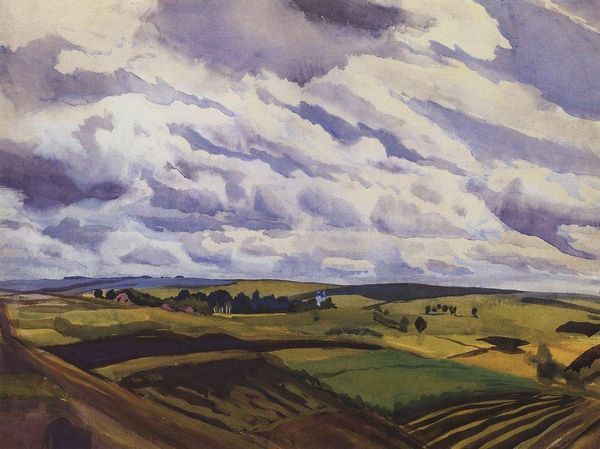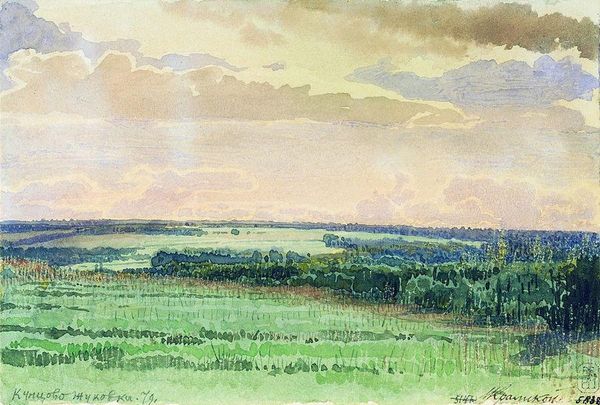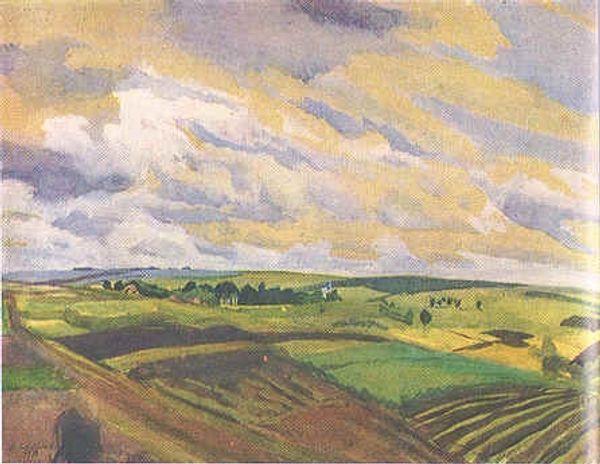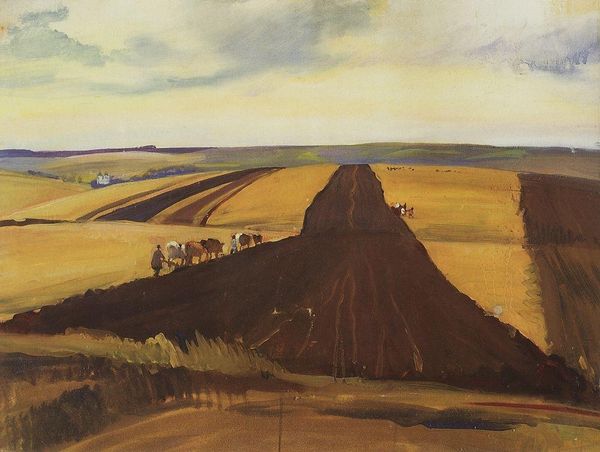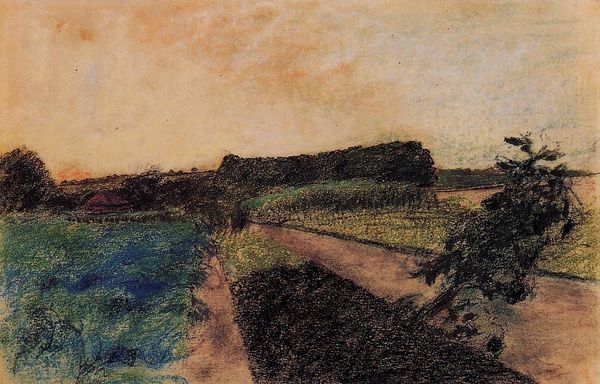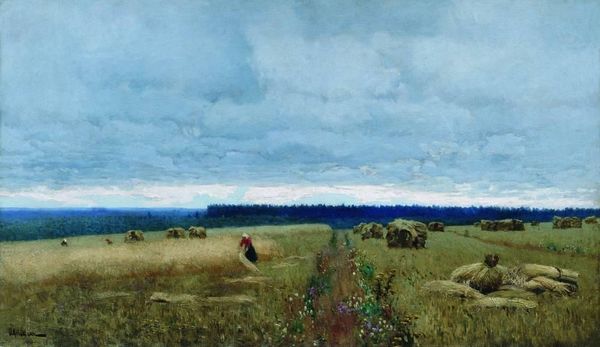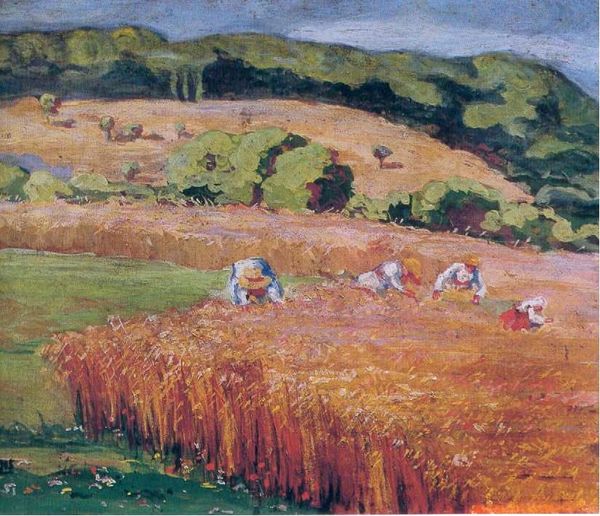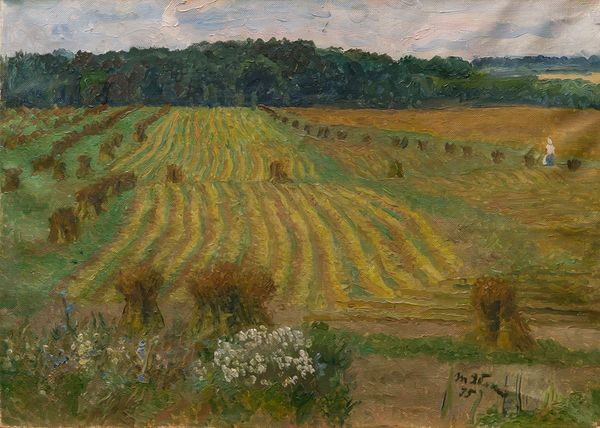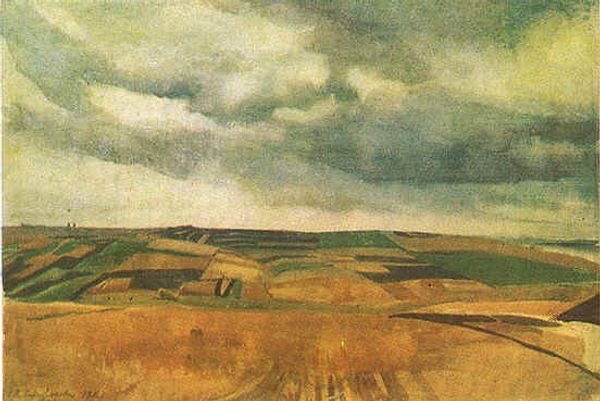
painting, oil-paint
#
painting
#
oil-paint
#
landscape
#
oil painting
#
russian-avant-garde
#
realism
Copyright: Public domain US
Editor: Zinaida Serebriakova’s "Winter Wheat," painted in 1910, is an expansive oil on canvas work. The landscape is dominated by agricultural patterns; furrows ploughed into the field stretch into the distance. What immediately strikes me is how grounded and earthy the painting feels, in a very material way. What are your thoughts? Curator: The directness in the portrayal of agricultural labour and the materiality of the land itself is compelling. Think about the physical effort represented – the labor of ploughing, sowing, and harvesting. Serebriakova isn’t presenting a romanticized vision of nature, but the very real economic backbone of rural life. Editor: So it's less about aesthetic beauty, and more about representing the means of production? Curator: Exactly. How does Serebriakova’s approach to paint itself reflect this focus? Note the visible brushstrokes and the relatively muted color palette. This isn’t about illusionism; it’s about the direct translation of physical reality onto the canvas. The surface of the painting itself becomes a document of labor, mirroring the plowed field. It encourages reflection on the socio-economic realities present within rural communities. Editor: It really shifts my perception of landscape paintings. I'd always viewed them through a lens of idealized nature, never considering them as a record of physical human work. Curator: Consider how materials are sourced and distributed during this period in Russia. Even something like pigments reflects social dynamics and availability. Serebriakova focuses on an intimate portrayal of what it meant to engage in creating something like "Winter Wheat". Editor: That's such an interesting consideration; the literal materials, and the material conditions that went into this painting, now change everything. Curator: Precisely. By looking at "Winter Wheat" through a materialist lens, we can understand more about the artist and culture responsible for its existence.
Comments
No comments
Be the first to comment and join the conversation on the ultimate creative platform.


